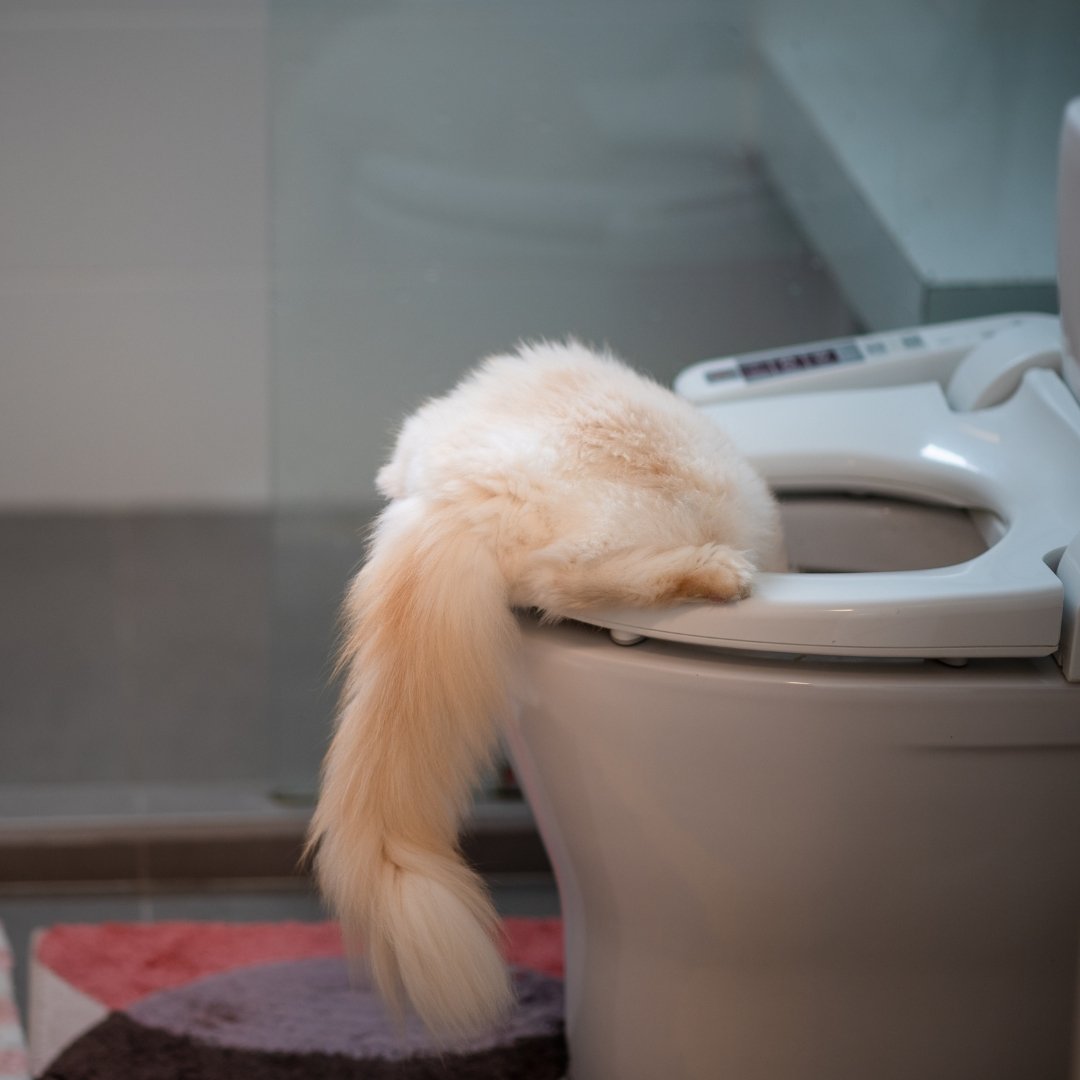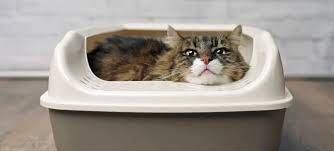The Risks of Flushing Animal Waste Down the Toilet
The Risks of Flushing Animal Waste Down the Toilet
Blog Article
Everyone maintains their own unique conception on the subject of Don't Flush Your Pets Poo Down The Loo, Vet Warns.

When it involves disposing of waste, especially animal waste, many people often resort to the practical option of flushing it down the toilet. Nonetheless, this apparently simple service can have major consequences for the setting and public health. In this write-up, we'll check out why flushing animal waste down the toilet is a negative idea and provide different methods for correct disposal.
Introduction
Correct garbage disposal is critical for preserving environmental sustainability and public health. While it may appear safe to flush animal waste down the commode, it can cause numerous concerns, both for the setting and human wellness.
Threats of flushing animal waste
Environmental influence
Flushing pet waste presents damaging bacteria and virus into rivers, which can negatively affect marine environments. These pathogens can infect water sources and damage aquatic life, interrupting fragile communities.
Public health problems
Pet waste contains dangerous bacteria such as E. coli and Salmonella, which can position significant health risks to people. Purging pet waste down the toilet can pollute water materials, bring about the spread of conditions and infections.
Alternatives to flushing
Instead of flushing animal waste down the toilet, there are several alternative disposal techniques that are much more environmentally friendly and hygienic.
Composting
Composting animal waste is an eco-friendly means to get rid of it. By composting, organic matter is broken down right into nutrient-rich soil, which can be used to feed gardens and plants.
Landfill disposal
Taking care of animal waste in a land fill is one more alternative. While not as environmentally friendly as composting, it is a more secure option to flushing, as it protects against the contamination of water sources.
Pet dog waste disposal systems
There are customized animal garbage disposal systems readily available that safely and hygienically throw away pet waste. These systems frequently click here utilize enzymes to break down waste and remove smells.
Steps to proper animal waste disposal
To make certain appropriate disposal of pet waste, follow these steps:
Scooping and bagging waste
Consistently scoop and bag animal waste utilizing biodegradable bags. This prevents waste from infecting the setting.
Making use of marked waste containers
Dispose of bagged pet waste in marked waste containers, such as compost bins or landfill bins. Avoid flushing it down the commode in all prices.
Cleansing litter boxes and animal areas regularly
Consistently tidy litter boxes and animal locations to avoid the buildup of waste and microorganisms. Use pet-safe cleansing products to keep hygiene.
Advantages of proper disposal techniques
Adopting correct disposal methods for pet waste supplies a number of advantages:
Reduced environmental pollution
Appropriate disposal approaches reduce the danger of environmental pollution, shielding rivers and ecological communities from contamination
Reduced danger of water contamination.
By staying clear of flushing animal waste down the bathroom, the danger of water contamination is significantly decreased, securing public health.
Boosted hygiene and hygiene
Appropriate disposal approaches advertise far better hygiene and health, creating a safer environment for both humans and animals.
Conclusion
In conclusion, flushing animal waste down the toilet is hazardous to the environment and public health. By adopting alternative disposal approaches and adhering to correct waste administration methods, we can minimize the adverse impact of pet waste and add to a cleaner, healthier earth.
What To Do With Dog Poo – The Do's And Don'ts Of Disposing Of Faeces
Dog poo bins
Some councils provide dedicated dog waste bins in popular dog-walking areas that can take dog poo that has been bagged but you can legally dispose of dog waste in any public litter bin, as long as it is securely bagged. This also applies to your wheelie bin at home.
Do not flush
Water companies do not recommend flushing dog faeces down the toilet because certain parasites can survive the water processing treatment and are potentially harmful to humans. You should also never consider flushing dog poo that has been bagged down the toilet as the bags will not break down and instead create severe blockages in the sewage system.
In the woods
The Forestry Commission promotes a ‘stick and flick’ method for dealing with waste in the woods. This means finding a stick and using it to flick any poo from off the path so that it is out of the way of other walkers. You could also bury it as long as it is not in an area where there might be livestock.
Livestock
Parasites found in dog poo can be transmitted to livestock if they inadvertently eat infected faeces that has been left on grazing land. This could result in the death of sheep or abortion in cattle so you should always make sure you pick up your dog’s waste in fields where livestock could be present.

Consistently tidy litter boxes and animal locations to avoid the buildup of waste and microorganisms. Use pet-safe cleansing products to keep hygiene.
Advantages of proper disposal techniques
Adopting correct disposal methods for pet waste supplies a number of advantages:
Reduced environmental pollution
Appropriate disposal approaches reduce the danger of environmental pollution, shielding rivers and ecological communities from contamination
Reduced danger of water contamination.
By staying clear of flushing animal waste down the bathroom, the danger of water contamination is significantly decreased, securing public health.
Boosted hygiene and hygiene
Appropriate disposal approaches advertise far better hygiene and health, creating a safer environment for both humans and animals.
Conclusion
In conclusion, flushing animal waste down the toilet is hazardous to the environment and public health. By adopting alternative disposal approaches and adhering to correct waste administration methods, we can minimize the adverse impact of pet waste and add to a cleaner, healthier earth.
What To Do With Dog Poo – The Do's And Don'ts Of Disposing Of Faeces
Dog poo bins
Some councils provide dedicated dog waste bins in popular dog-walking areas that can take dog poo that has been bagged but you can legally dispose of dog waste in any public litter bin, as long as it is securely bagged. This also applies to your wheelie bin at home.
Do not flush
Water companies do not recommend flushing dog faeces down the toilet because certain parasites can survive the water processing treatment and are potentially harmful to humans. You should also never consider flushing dog poo that has been bagged down the toilet as the bags will not break down and instead create severe blockages in the sewage system.
In the woods
The Forestry Commission promotes a ‘stick and flick’ method for dealing with waste in the woods. This means finding a stick and using it to flick any poo from off the path so that it is out of the way of other walkers. You could also bury it as long as it is not in an area where there might be livestock.
Livestock
Parasites found in dog poo can be transmitted to livestock if they inadvertently eat infected faeces that has been left on grazing land. This could result in the death of sheep or abortion in cattle so you should always make sure you pick up your dog’s waste in fields where livestock could be present.
I hope you enjoyed reading our piece about Should you flush animal waste down the toilet. Thank you for spending some time to browse our article. Please take the opportunity to promote this write-up if you liked it. Kudos for your time. Kindly check our site back soon.
Request An Estimate Report this page